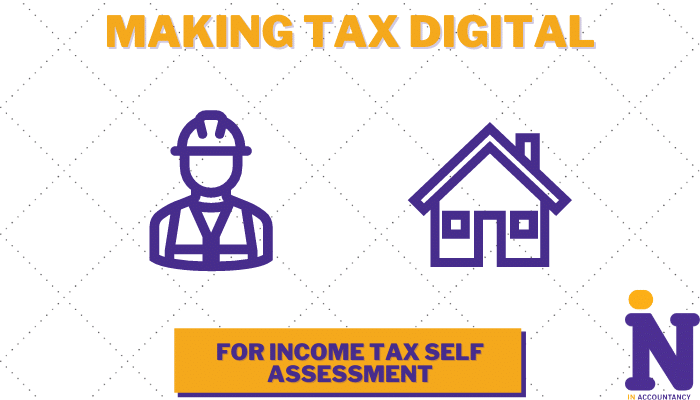Making Tax Digital for Income Tax Self-Assessment (MTD for ITSA) is set to come into effect from 6 April 2023, so what is it, who is impacted and what action do you need to take?
In this article we attempt to answer all of your questions, without bogging you down in unnecessary detail and jargon, so you can be fully prepared.
What is MTD?
Making Tax Digital or MTD as we tend to refer to it as, was first introduced in the 2017 Finance Act, and came into effect for all VAT registered businesses trading over the VAT registration threshold of £85,000, from April 2019.
Why does MTD exist?
The Government introduced MTD in an effort to ‘close the tax gap’. The tax gap being the ca £8.5 billion annual tax deficit that the government believes exists between tax that should be paid, and tax that is actually collected on time.
HMRC believes that by requiring businesses to keep digital records and submit information more regularly this deficit will be reduced.
So, what exactly is it then?
MTD or Making Tax Digital, is the term for the plan to require eventually all businesses to do away with paper bookkeeping, keep their records digitally, and submit figures relating to their various business taxes, be those VAT, Income Tax, or Corporation Tax quarterly, and directly via a compliant software to HMRC.
As mentioned above, it came into effect for all businesses trading above the VAT registration threshold in April 2019, and the next phases of the rollout are as follows:
MTD for VAT
- April 2022 – all VAT registered businesses regardless of turnover
MTD for Income Tax Self Assessment (ITSA)
- April 2023 – sole traders, landlords, and members of partnerships who have a combined turnover of more than £10,000 from these means
MTD for Corporation Tax (CT)
- April 2026 – Corporation Tax comes online for quarterly submissions
MTD for VAT is in hand, with all of our client registered to the correct HMRC gateway and returns being filed digitally, so the rest of this article will focus on MTD for ITSA
MTD for ITSA – who is affected?
If you have income from a sole trade, a partnership or from property, or a combination of these, then this will impact you if your turnover is greater than £10,000 per annum.
What do I need to do?
Digital Records:
You will be required to keep digital records of all business income and expenditure
HMRC Portal:
You will need to sign up for a new MTD for ITSA account with HMRC before 6 April 2023, but you can get ahead of the game by signing up today if you are eligible
Quarterly Updates:
You will be required to update HMRC at least every three months with a summary of income and expenditure.
This must be done directly to HMRC via compatible software (more on this later), or via spreadsheets and an appropriate API, with no manual manipulation of the information
EOPS (End of Period Statement)
At the end of your accounting period, you will need to finalise any profit and loss position via an end of period statement (or EOPS as it will be known). This is where you will be able to make any adjustments for allowances and reliefs.
Final Declaration
This final declaration effectively brings together everything done above into one final declaration which must be submitted by 31 January in the following year, must as the current self-assessment tax return. It is this final declaration which will confirm to HMRC your tax liability.
Can I chose WHEN to make my Quarterly Submissions to HMRC?
No. At least it’s unlikely.
The Government has just closed a consultation on Basis Period Reform (see article) in which it proposes to change the tax basis period for all sole trade businesses so that any profits are assessed in line with the fiscal year.
This means that the quarterly update calendar will follow this annual period (at least for businesses with a year end between 31 March and 5 April) as follows:
Period
Q1
Q2
Q3
Q4
EOPS
Final Declaration
Dates
6/4/2023–5/7/2023
6/7/2023–5/10/2023
6/10/2023–5/1/2024
6/1/2024–5/4/2024
–
And payment of tax due
Submission Deadline
5 August 2023
5 November 2023
5 February 2024
5 May 2024
31 January 2025
31 January 2025
It is likely that, with the correct software, and EOPS and final declaration can be done as one single submission.
What if I’m VAT registered?
If you are a VAT registered sole trader or partnership, and already making MTD for VAT quarterly submissions, it is likely that you will be able to make one submission for both schemes. However, the details have not yet been worked out, with guidance anticipated by the end of this calendar year.
In earlier iterations of the proposed legislation there were cases where a small business where the individual is VAT registered and has income from property might have been having to make upwards of 21 submissions to HMRC per annum!!!
Is this really going to happen?
Yes!
Especially now the Government has spent so much in the last 18 months on support for small business – they are more determined than ever to make this happen and close the tax gap.
However, there is still a small chance that the introduction of MTD for ITSA will be delayed.
What’s the upside?
As per above, this is going to happen, so rather than complain about the added administrative burden, let’s look for a moment at the benefits to business of the introduction of MTD:
Digital Record Keeping
Means you can get rid of all of those boxes of paper and clutter
Avoidance of Mistakes
Completing a self assessment tax return so long after the year end often means that small business owners forget to claim some of the little day to day expenses, or lose receipts and actually overpay rather than underpay tax
Increased Security
Modern accounting software is so much more secure against identity and financial fraud than spreadsheets or shoeboxes
Cloud Based Technology
Means you can work from anywhere – you don’t have to be at your desk, or have the right pad with you to raise an invoice, or chase money that’s owed to you
More Real Time Information
Allows for cash flow forecasting and better decision making
Automation
Gets rid of the basic boring tasks allowing you to concentrate on the bits of your business that you really enjoy, rather than getting bogged down in administration!
But what about the cost??
The answer really depends very much on your individual situation – how much you are willing and able to do yourselves and how much you will require to be done on your behalf.
Your ability to adopt new technology will have the biggest impact on cost.
As ever, the better your recordkeeping, the lower your fees!
And software?
As many of you will already know, we love Xero, which we believe is the leading cloud accounting software there is.
Xero is continuously developing its offering, and we are already testing its solutions for landlords, sole traders and income tax.
A xero license for the smallest of businesses starts from £10+VAT per month.
There are however many other software providers available, and we will be happy for you to use any of them. If you bank with any banks in the Natwest Group (check out Mettle if you don’t yet have a business bank account – it’s the online only bank from Natwest), we would highly recommend you look at their FreeAgent software, which they provide to customers of theirs free of charge.
For more details on MTD compliant account software, please see the link below from HMRC for all ready and compatible software as well as software in development:
https://www.gov.uk/guidance/find-software-thats-compatible-with-making-tax-digital-for-income-tax
Finally, for now, please remember that the full legislation is neither agreed nor published, so there may be some changes to come. However, I hope that this gives you enough information to be aware of what will inevitably take place, and time to put plans in place to meet your MTD obligations.
If you would like to talk with me, or one of the team, in greater detail about what MTD for ITSA, or indeed any of the other MTD schemes, then please do not hesitate to contact us via all the usual channels.







